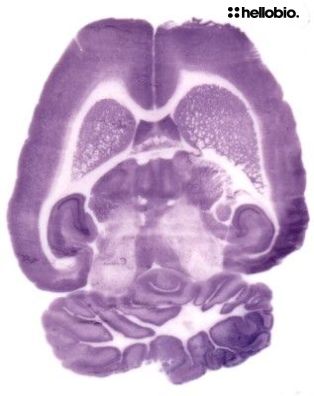NBT/BCIP Stock Solution
(HB1881)
Certificate of Analysis
Product overview
| Name | NBT/BCIP Stock Solution |
| Biological description | Overview Suitable as substrate for alkaline phosphatase detection in applications such as IHC & immunoblotting (e.g. Dot blot). Produces an insoluble, blue- purple end product following reaction with alkaline phosphatase (AP). Contents Solution of 18.8 mg/ml nitro-blue tetrazolium chloride; 9.4 mg/ml 5-bromo-4-chloro-3-indolylphosphate toluidine salt in 67% DMSO. Preparation note - preparation of staining solution Always prepare fresh solutions, shortly before use.
Note: Please do not include MgCl2 in the detection buffer as this can lead to spotty background on the membrane after the detection procedure. Insoluble in water. |
| Description | Alkaline phosphatase detection substrate |
Write Your Own Review
Images
Biological Data
| Application notes | #Protocol 1: NeuN Histoblot in rat brain tissue and development using NBT/BCIP
|
Solubility & Handling
| Storage instructions | +4°C |
| Storage of solutions | Prepare and use solutions on the same day if possible. Store solutions at -20°C for up to one month if storage is required. Equilibrate to RT and ensure the solution is precipitate free before use. |
| Shipping Conditions | Stable for ambient temperature shipping. Follow storage instructions on receipt. |
| Important | This product is for RESEARCH USE ONLY and is not intended for therapeutic or diagnostic use. Not for human or veterinary use |
Chemical Data
| Chemical name | 5-Bromo-4-chloro-3-indolyl phosphate disodium salt and 2,2-bis(4-Nitrophenyl)-5,5-diphenyl-3,3-(3,3-dimethoxy-4,4-diphenylene)ditetrazolium chloride |
| Chemical structure |  |
| PubChem identifier | 71312258 |
| SMILES | CC1=CC=C(C=C1)N.COC1=C(C=CC(=C1)C2=CC(=C(C=C2)[N+]3=NC(=NN3C4=CC=C(C=C4)[N+](=O)[O-])C5=CC=CC=C5)OC)[N+]6=NC(=NN6C7=CC=C(C=C7)[N+](=O)[O-])C8=CC=CC=C8.C1=CC(=C(C2=C1NC=C2OP(=O)(O)O)Cl)Br.[Cl-].[Cl-] |
References for NBT/BCIP Stock Solution
References are publications that support the biological activity of the product
-
Fluorescent in situ hybridization employing the conventional NBT/BCIP chromogenic stain
Trinh le A et al (2007) Biotechniques 42(6) : 756-9 -
A high-resolution, fluorescence-based method for localization of endogenous alkaline phosphatase activity
Cox WG et al (1999) J Histochem Cytochem 47(11) : 1443-56 -
A multiple-staining procedure for the detection of different DNA fragments on a single blot
West S et al (1990) Anal Biochem 190(2) : 254-8






 Understanding purity and quality - a guide for life scientists
Understanding purity and quality - a guide for life scientists

